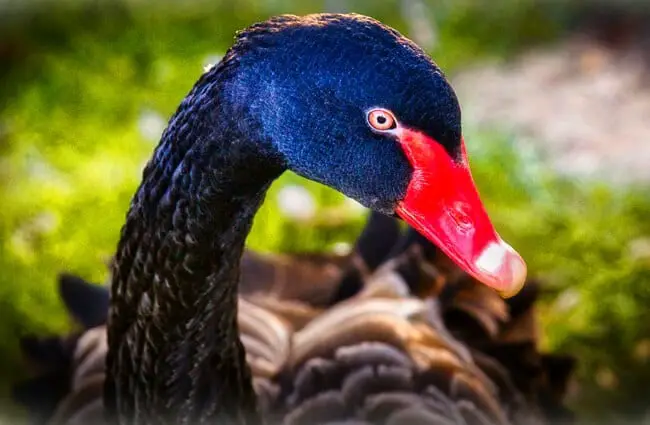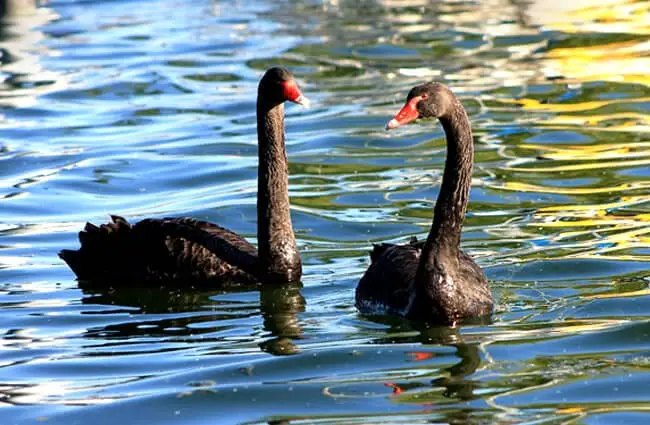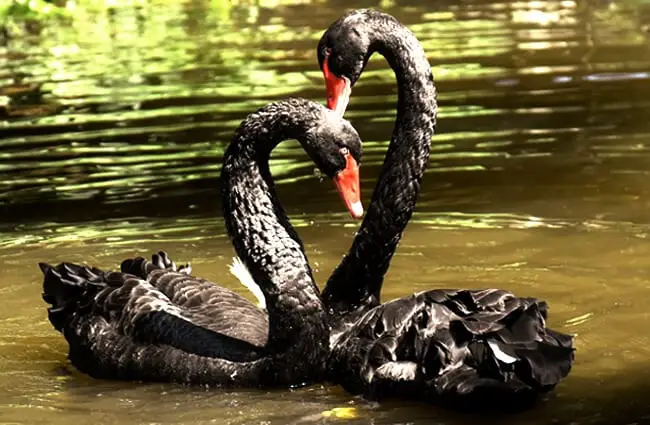The Enigmatic Black Swan: A Comprehensive Look
The Black Swan, Cygnus atratus, is a striking waterbird native to Australia, instantly recognizable by its jet black plumage and vibrant red bill. More than just a beautiful creature, the Black Swan has a fascinating history, complex behaviors, and an important role within its ecosystem. This guide delves into all aspects of this remarkable species, from its natural habitat and evolutionary journey to its interactions with humans and current conservation status.

Origins and Evolution
A Relatively Recent Arrival
While swans have a long evolutionary history, the Black Swan is considered a relatively recent addition to the swan family. Fossil evidence suggests that the ancestors of the Black Swan were likely more widespread, with remains found in Australia, Papua New Guinea, and potentially even parts of Asia. However, the current species as we know it evolved in the Australian region during the Pleistocene epoch. Its unique coloration is thought to have developed as an adaptation to the specific environmental conditions found in Australia’s wetlands.
Evolutionary Relationships
The Black Swan is most closely related to other swans, belonging to the family Anatidae, which also includes ducks and geese. It exhibits significant differences from its paler cousins, particularly in its plumage and aggressive territorial behaviors. Genetic studies continue to refine our understanding of the evolutionary relationships within the swan family and how the Black Swan fits into the broader Anatidae lineage.
Habitat and Distribution
Australian Strongholds
The Black Swan is predominantly found in Australia, where it thrives in a variety of wetland habitats. These include freshwater and saline lakes, swamps, marshes, lagoons, and coastal estuaries. They are particularly abundant in southwestern and southeastern Australia. Introduced populations are now well established in New Zealand, and smaller, localized populations exist in other parts of the world, including North America and Europe.

Habitat Requirements
Black Swans require relatively shallow water bodies with ample aquatic vegetation for foraging. They also need access to open areas for takeoff and landing, as well as suitable nesting sites, often constructed near the water’s edge. The availability of these resources plays a crucial role in determining the distribution and abundance of Black Swan populations.
Diet and Foraging Behavior
A Herbivorous Appetite
Black Swans are primarily herbivorous, feeding on a diverse range of aquatic plants, including submerged vegetation, algae, and grasses. They also consume terrestrial plants, such as pasture grasses, when foraging in fields near wetlands. Their diet can vary depending on the season and availability of food resources.

Foraging Techniques
Black Swans often forage by upending themselves in the water, reaching for submerged vegetation with their long necks. They also graze on terrestrial plants in fields and pastures. They are adept at foraging in both shallow and deeper water, and can often be seen foraging in groups, particularly during the non‑breeding season.
Mating, Reproduction, and Life Cycle
Pair Bonding and Courtship
Black Swans are generally monogamous, forming long‑term pair bonds that can last for several years. Courtship rituals involve elaborate displays, including head bobbing, wing spreading, and vocalizations. Pairs often engage in synchronized swimming and preening behaviors, strengthening their bond.
Nesting and Raising Cygnets
Black Swans typically build large, mound nests near the water’s edge, using vegetation and mud. The female lays between four and eight eggs, which are incubated for around 35 to 40 days. The cygnets, or young swans, are precocial, meaning they are relatively mobile and can feed themselves shortly after hatching. Both parents participate in caring for the cygnets, protecting them from predators and teaching them foraging skills. The cygnets remain with their parents for several months, gradually learning to fend for themselves. The young swans reach full maturity around three to four years of age.

Ecological Role and Interactions
Ecosystem Engineers
Black Swans play an important role in maintaining the health of wetland ecosystems. Their grazing activities help to control aquatic vegetation, preventing excessive growth and maintaining open water areas. Their foraging also helps to cycle nutrients through the ecosystem. Their presence can influence the distribution and abundance of other species, shaping the overall structure of the wetland community.
Predators and Threats
While adult Black Swans are relatively large and powerful, cygnets are vulnerable to predators such as foxes, cats, and birds of prey. Habitat loss and degradation pose the greatest threat to Black Swan populations. Pollution, disturbance from human activities, and changes in water levels can all negatively impact their breeding success and survival rates. In areas where they have been introduced, they can sometimes compete with native waterbirds for resources.
Black Swans and Humans
Cultural Significance
The Black Swan holds significant cultural importance for Aboriginal Australians, featuring prominently in Dreamtime stories, artwork, and traditional ceremonies. It is often seen as a symbol of beauty, grace, and spiritual power. The bird also appears in the coat of arms of Western Australia.
Human Interactions and Conservation
In recent centuries, Black Swans were hunted for their feathers and meat. However, they are now protected by law in most areas. Conservation efforts focus on protecting and restoring wetland habitats, controlling introduced predators, and minimizing disturbance from human activities. Monitoring population trends is crucial for assessing the effectiveness of these conservation measures.

Interesting Facts
- Black Swans can live for up to 20 years in the wild.
- They are powerful fliers, capable of reaching speeds of over 100 kilometers per hour.
- The bright red bill is highly pigmented and helps them clip aquatic vegetation efficiently.
- Black Swans are known for their territorial behavior, aggressively defending their nesting sites from intruders.
- They often gather in large flocks, particularly during the non‑breeding season.
- The term “black swan event” originated from the historical belief that all swans were white. The discovery of Black Swans in Australia challenged this assumption, highlighting the unpredictability of the world.
Encountering Black Swans: A Guide
If you are lucky enough to encounter Black Swans in the wild, observe them from a respectful distance. Avoid approaching them closely, especially during the breeding season. Do not feed them, as this can disrupt their natural foraging behavior. If you encounter a distressed or injured Black Swan, contact your local wildlife rescue organization.
Caring for Black Swans in Captivity
Black Swans in captivity require spacious enclosures with access to both land and water. They need a varied diet consisting of aquatic vegetation, pellets, and supplemental food. Regular veterinary care is essential to maintain their health and wellbeing. Provide them with opportunities for enrichment, such as foraging toys and social interaction with other swans. Avoid overcrowding, as this can lead to stress and aggression.
The Black Swan is a remarkable creature, embodying both beauty and resilience. By understanding its biology, ecology, and cultural significance, we can appreciate its value and ensure its survival for generations to come.

![Red Angus Closeup of a beautiful Red Angus cowPhoto by: U.S. Department of Agriculture [pubic domain]https://creativecommons.org/licenses/by/2.0/](https://animals.net/wp-content/uploads/2020/03/Red-Angus-4-238x178.jpg)




![Red Angus Closeup of a beautiful Red Angus cowPhoto by: U.S. Department of Agriculture [pubic domain]https://creativecommons.org/licenses/by/2.0/](https://animals.net/wp-content/uploads/2020/03/Red-Angus-4-100x75.jpg)

